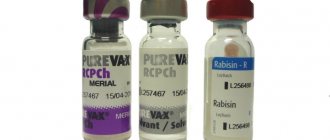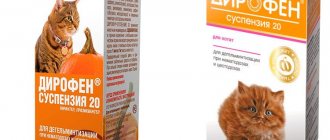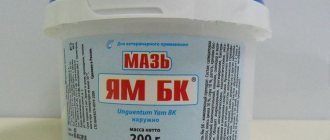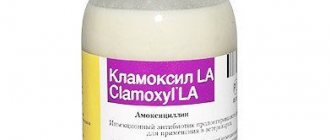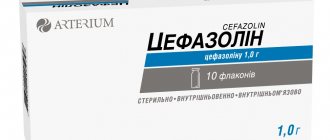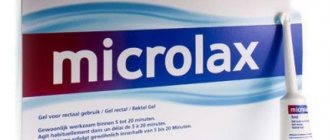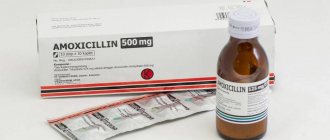What's in it?
This drug is exclusively of plant origin, therefore it is classified as herbal medicine. "Canephron" for cats in tablets includes extracts of centaury, lovage, rosemary leaf and povidone. These components are the active ingredients. The auxiliary ingredients are corn starch, lactose monohydrate and silicon dioxide.
The composition of liquid "Canephron" is somewhat different from the composition of the tablet form. Active ingredients also include centaury herb, lovage root and rosemary leaves. But water and ethyl alcohol are auxiliary. It is the latter component that causes disgust in cats and makes it difficult to take the drug in this form.
general description
Canephron is a drug based on a complex of medicinal herbs: lovage roots, centaury herb, rosemary leaves. It is available in two forms - tablets (dragées) and drops for oral administration. And although each dosage form has its own characteristics, they do not differ in effectiveness. For cats, you can use Canephron both in tablets and drops. The drops are a hydroalcoholic herbal extract. In addition to the active ingredients (medicinal plants), the solution contains ethanol and water that has undergone special purification. Externally it is a yellow-brown liquid. During long-term storage, slight turbidity may appear. There is a characteristic aroma of medicinal herbs. For packaging, bottles with a capacity of 50 and 100 ml are used. The main feature of the bottles is that they are equipped with a lid with a built-in pipette. It allows you to quickly and easily instill the required amount of medicine.
Tablets, in addition to herbs, contain the following auxiliary components:
- corn starch;
- lactose monohydrate;
- povidone;
- corn oil, etc.
Biconvex round tablets of orange color have a smooth surface. Externally their sizes are small. They are packaged in contour cells of 20 pieces. 3 such plates are placed in a cardboard package, that is, 60 tablets.
How does the drug work?
The instructions for Canephron for cats indicate its diuretic, antimicrobial, anti-inflammatory and antispasmodic effect on the pet’s genitourinary system. The drug also helps:
- cleansing of toxins;
- an increase in the amount of urine excreted per day;
- restoration of normal urine reaction (normally it is slightly acidic);
- reducing pain in the genitourinary system;
- suppression of infection propagation;
- prevent the appearance of stones in the urinary tract.
Storage conditions and shelf life of the drug
The drug is stored in the manufacturer's sealed packaging, in a dry place out of reach of children. Avoid exposing the medicine to sunlight. Storage temperature is room temperature, from 10 to 15 degrees.
The drug should not be used after the expiration date indicated on the package.
The shelf life for dragees is 4 years from the date of manufacture. For the solution – 2 years, after opening the bottle – 6 months.
For what diseases is it prescribed?
The instructions for using Canephron for cats state that this drug has been used in veterinary medicine relatively recently. Doctors prescribe it as a preventive measure or in complex therapy together with other drugs.
In the early stages, Canephron for cats is used to treat diseases such as:
- cystitis (inflammation of the bladder due to bacteria, fungi or viruses);
- pyelonephritis (a complication of cystitis when inflammation spreads to the kidneys);
- glomerulonephritis (chronic inflammation of the kidneys of a non-infectious nature, which can occur as a result of injury or hypothermia);
- urolithiasis (the appearance of rocky formations in the genitourinary system).
When to use
Instructions for use are compiled for people, but for cats Canephron is prescribed in similar situations, that is, for urological diseases. It is usually given to animals with the following health problems:
- with pyelonephritis;
- with glomerulonephritis;
- with cystitis;
- for inflammation of the urinary tract.
The drug is often used for pets and for urolithiasis. The medicine is well suited for preventing relapses of this disease, including after surgery. Since the herbal medicine increases the daily volume of urine and prevents its stagnation in the kidneys or bladder, the risk of re-formation of stones is reduced.
Canephron is sometimes prescribed for renal failure in cats as maintenance therapy. Herbal medicine is not capable of ridding an animal of an incurable disease, but it can improve the functioning of the urinary system, reduce the pet’s suffering and prolong its life.
The medication can be used for acute and chronic diseases caused by bacteria, hypothermia, poor diet and other factors. As a monotherapy, Canephron is usually used for prevention, and in treatment it is combined with antibiotics, symptomatic and other agents, depending on the characteristics of the pathology.
Who is it contraindicated for?
Despite the fact that this medicine is of plant origin, it cannot be given to all animals. The instructions for use of Canephron for cats contain contraindications, including:
- peptic ulcers of the stomach and intestines;
- hypersensitivity to the components of the drug;
- liver and kidney failure.
In some situations, taking the drug is allowed, but with special instructions. For example, when a cat is pregnant, the drug is prescribed taking into account the benefits and risks for the offspring. If the animal has swelling due to heart and kidney problems, then the use of fluid will be limited. In the presence of concomitant inflammatory processes, the drug is taken only as prescribed by a veterinarian. In case of impaired renal function, the medicine is used only in complex therapy.
You should also draw your attention to the fact that taking Canephron may reduce the cat’s concentration and reaction speed. Therefore, if your pet remains lethargic, inattentive and a little disoriented while taking the drug, then you should not think that the treatment is unsuccessful. In fact, all these symptoms are observed in your pet due to the ethyl alcohol contained in the medicine. Once you stop taking it, your cat's behavior will return to normal.
Limitations and side effects
It is strictly forbidden to prescribe the drug to cats if:
- stomach or duodenal ulcer (at the acute stage);
- liver failure;
- intolerance to the components of the drug, as well as fructose and lactose;
- deficiency of lactase and sucrase;
- excessive sensitivity to the components of the drug.
In case of individual hypersensitivity and intolerance to the drug or its components, allergic manifestations are possible. It is necessary to interrupt the reception and report them to the veterinarian.
Special instructions for treating cats:
- for heart disease - take Canephron only under the supervision of a veterinarian;
- pregnant and lactating women - only as directed by a doctor, taking into account an assessment of the risk and benefit for the animal;
- with kidney pathology - Canephron cannot be used in monotherapy, taken only under the supervision of a veterinarian;
- for diabetes mellitus - take a liquid dosage form of the drug;
- In case of head injuries and brain diseases, use caution and take under medical supervision.
The medication is usually well tolerated by cats. No side effects of Canephron have been identified.
Release form - drops
One of the forms of release of this drug is a liquid alcohol solution. It may seem that it is easier to give the drug to an animal in this form, but this is not so. Difficulties are caused by the pungent smell of alcohol, which causes disgust in the pet.
The dosage of Canephron drops for cats is 1-2 drops per 1 kg of weight. The cat needs to take this solution twice a day for a month.
The solution must be diluted with a small amount of water. It is better to give it to an animal from a syringe without a needle. You also need to be careful that the alcohol solution does not get on your pet’s mucous membranes, such as the eyes. The concentrated drug can harm the cat.
Instructions for use and dosage
Before use, consultation with a veterinarian is required. Canephron is a medicine tested and used in humanitarian medicine; the instructions for use do not contain a dosage for a cat. It has been used recently in veterinary medicine, so there are no standard prescriptions for cats; the amount of the drug depends not only on the weight of the animal, but also on its physiological characteristics and severity and condition. Prescribe 5-10 drops per adult cat 1-2 times a day. It can be given either by mixing with water or adding to food. If tablets are prescribed: 1/2 - 1/4 tablets 2 times a day. But when dividing the tablet into parts, the shell is broken, which significantly reduces the effectiveness of the drug. The duration of the course is from several days to 1 month.
Canephron N (drops) contains alcohol. The strong smell repels cats. When mixing with water, you can wait a little (10-30 minutes) for the smell to weaken or disappear.
Tablets "Canephron"
If your veterinarian prescribed the drug to your pet in tablet form, the application process will be slightly different. The tablet product also has a pronounced smell of alcohol, so be prepared for the fact that your ward will not want to drink the tablets either.
The dosage of Canephron tablets for cats also depends on the age of the animal. For young cats this is a quarter of one tablet, and for adult large cats it is half of one tablet. The duration of the course is also 3-4 weeks when taking tablets twice a day.
A tablet of the drug is placed on the root of the animal’s tongue and allowed to swallow. After which the cat must be given plenty of water to drink.
Do not forget that self-medication is contraindicated not only for people, but also for animals. Only a veterinarian can prescribe the optimal dosage of Canephron for cats, and then only after tests and examination of your pet. Therefore, you should not rely on luck and treat your little family members yourself.
How to use the tablets
If you use Canephron tablets to treat a cat, then the dosage is 1/4-1/2 tablets, depending on the size of the animal. For small pets, a quarter of a tablet will be enough, but for large animals (more than 5 kg) the dose should be increased to half. Your doctor should calculate the exact dose.
Since the tablets have a specific aroma of medicinal herbs, cats categorically refuse to eat them voluntarily. Most likely, it won’t even be possible to mix it into food, although there are no such restrictions. The pet will smell the smell and refuse the treat. In this regard, it is best to give Canephron tablets to a cat as follows:
- Divide the pills into the required number of parts depending on the dosage.
- Take your pet in your arms. To prevent scratching, wrap it in a blanket or old large towel.
- Lay your stomach up or tilt your head back, and then place the tablet on the root of your tongue.
- Stroke the neck or blow into the nose to trigger the swallowing reflex. To make the tablet slide inside easier, you can hide it in a small piece of butter.
- Give your cat clean water from a syringe without a needle or a rubber bulb with a soft tip. If you do not allow the animal to take the pill, the bitter taste may cause foam at the mouth and increased salivation.
You need to give the pills 2 times a day. The course of treatment is usually long – up to 30 days. If necessary, treatment is repeated after 2-3 weeks.
Side effect of the drug
Like any medicine, the use of Canephron for cats is fraught with various side effects. Among them, the most common are:
- allergic reaction (manifests individually);
- nausea and vomiting;
- diarrhea and other intestinal disorders;
- nervous system disorders.
If you observe any symptom that was not there before, or your pet’s behavior has changed for the worse, you should immediately stop taking the drug and consult a veterinarian. He will be able to determine whether these symptoms are actually caused by the medication and prescribe other drug therapy.
"Canephron" for chronic renal failure in cats
CKD stands for "chronic kidney failure." Older cats are susceptible to this disease. It is characterized by irreversible deterioration of the kidney tissue. Among cats over 15 years old, this disease is observed in every second animal. You can understand that your pet has chronic renal failure if you pay attention to the presence of symptoms such as:
- bad breath;
- stomatitis;
- sores on the tip of the tongue;
- pale color of mucous membranes.
Associated symptoms may also include intestinal disorders, vomiting, and disorders of the nervous system and behavior. Due to the fact that phosphorus excretion from the cat's body is impaired, renal hyperparathyroidism can develop. This is a disease with a predominance of severe urolithiasis, with frequent attacks of renal colic, and the development of renal failure.
Since renal failure in this case has a chronic course, Canephron is prescribed here as maintenance therapy to reduce the effect of various factors on the kidneys. If the urea content is high, Hofitol is prescribed together with Canephron. The dose of Canephron for cats in this case is half a tablet, and the dose of Hofitol is a quarter of a tablet. These drugs are used twice a day. The duration of the course is determined by the veterinarian, taking into account the general condition of the cat.
Also, for chronic renal failure in cats, in addition to drug treatment, diet and vitamin intake, rest and absence of stressful situations are recommended. Therefore, long trips should be postponed until you finish taking the medications.
Medicines for animals > Canephron N (drops)
The information posted on this page is for informational purposes only and cannot be used for self-medication! Before using medications, consultation with a specialist is MANDATORY! Brief description: Canephron N is a drug based on extracts from medicinal plants, used in veterinary medicine for the treatment of acute and chronic diseases of the kidneys, ureters and bladder in animals. The drug has a complex effect: relieves spasms, reduces signs of inflammation, promotes urine flow, and fights infectious agents. Due to this variety of effects, the drug is prescribed independently or as a component of complex therapy in the treatment of pyelo-, glomerulonephritis, cystitis, as well as urolithiasis (in particular, for the prevention of recurrent stone formation after surgical interventions). There is data on the use of the drug for chronic kidney failure in cats. For whom: used in the treatment and prevention of diseases of the urinary system in cats and dogs. Release form: Canephron N is a yellowish-brown liquid, transparent or slightly cloudy. During storage, a small amount of sediment may form, so the drug should be shaken before use. The liquid is a water-alcohol solution with an aromatic odor. The solution is bottled and packaged in dark glass bottles equipped with dropper caps and lids. Bottle volume – 50 and 100 ml. Each bottle is accompanied by instructions for use and placed in a cardboard box. Directions for use and dosage: Canephron N has been developed and tested for use in humans. This drug has been used relatively recently in veterinary medicine, so there is no generally accepted dosage regimen. Typically, a specialist prescribes individual dosages, frequency of administration and duration of therapy. For cats and small dogs, on average, 5-10 drops 1-2 times a day are enough, for medium-sized dogs – 10-15 drops, for large dogs – 15-20. After acute signs of inflammation have resolved, the dosage can be reduced. The course of treatment is up to 1 month with the possibility of repeated administration after a short break. The drops are dissolved in water and poured into the oropharynx using a syringe without a needle or fed to the animal along with food. The product contains alcohol, so after mixing with water, the solution should be left open for a while to ventilate. Limitations: the use of the drug is limited mainly by individual intolerance, allergies to medicinal plants included in its composition, and lactase deficiency. The solution should be used with caution if the animal has liver failure.
Reviews from veterinarians about Canephron for cats
Since this drug is used in veterinary medicine, it means that experts have a good opinion of it. Some doctors believe that Canephron, in addition to all the advantages described above, increases the effectiveness of antibiotic therapy. For prevention, it should be given in courses, several times a year.
If your cat has been prescribed a bunch of medications, and you are already tired of stuffing the animal with all these pills, then some veterinarians recommend replacing all herbal tablets and capsules with Canephron. They believe that it is enough to give one tablet of Canephron a day, rather than try to give the poor cat a lot of other herbal medicine.
Also, veterinarians strongly recommend providing the animal with plenty of fluids during any drug therapy. This is the key to the correct action of any medication.
Urolithiasis: you can save your pet (Veterinarian I.P. Danilov tells)
Cats are my favorite patients. I don't know a smarter or more beautiful animal. Unfortunately, as often happens in life, they are the ones who get the most unpleasant problems, one of which is urolithiasis. Without exaggeration, half of all cats entering our clinic suffer from this disease. Urolithiasis: you can save your pet
Urolithiasis is a disease that every cat owner should know and remember about.
First, let's clarify what urolithiasis (UCD) is. Doctors understand the term urolithiasis or urolithiasis as the formation of urinary stones (or sand) in the kidneys, bladder or their retention in the lumen of the ureters and urethra. The number of stones formed in the urinary organs ranges from one to one hundred or more. Their size also varies widely (from a millet grain to the size of a large walnut).
What are the predisposing factors for stone formation?
Improper nutrition of the animal. When you next want to feed your pet something tasty, look at the composition of this treat. High levels of protein, minerals, phosphorus and magnesium in the diet contribute to the formation of stones. Hormonal imbalance, especially castration, increases the risk of developing urolithiasis. Sedentary lifestyle and obesity. Animals overweight 5-9 kg are most susceptible to urolithiasis (92%).
Very often, the disease hides for a long time under different masks, which is why the owner cannot even guess what the true reason for the change in the pet’s behavior is. It could just be the disappearance of the shine of the fur or the cat’s bad mood. Sometimes there are gastrointestinal disorders, which the owner attributes to dietary violations.
People usually come to us with obvious signs of urolithiasis: signs of intoxication (lack of appetite, refusal of water, lethargy), painful urge to urinate, urine excretion in small portions, the appearance of blood in the urine.
When the animal enters the clinic, the doctor relieves the acute condition and tries to remove the stone (the animal must be under anesthesia). In especially severe cases, the creation of an artificial excretory duct from the bladder is required. In any case, after stabilization of the condition, lifelong prevention is mandatory: the use of medicinal feed, herbal medicine, and regular visits to the doctor with a urine test, ultrasound of the urinary system, etc.
For the prevention and complex treatment of urolithiasis, I recommend the German urological drug Canephron N. It has a mild diuretic, anti-inflammatory and antispasmodic effect. In addition, Canephron N increases the effectiveness of antibiotic therapy. For prevention, it should be given in courses, several times a year.
And I sincerely wish you and your pets to take all necessary measures on time, so that you never hear sad words from the doctor too late!
Reviews from owners about Canephron
Many consumers of this drug rely on the opinion of specialists. Like, if the vet prescribed it, it means it’s not harmful. But really, we cannot be smarter than a qualified veterinarian. Therefore, there is some truth in this.
Reviews about Canephron for cats on most forums are positive. Many owners even exchange experiences on how best to give this very medicine to a cat, since, as we have already mentioned, both the liquid solution and the tablet form have a distinct, specific smell of alcohol.
For example, some advise waiting until the alcohol vapor (when using drops) evaporates before giving the medicine. Others recommend mixing the drops, one teaspoon of water and one tablespoon of canned food. They claim that in this case, part of the alcohol vapor evaporates, and the rest mixes with the food and does not cause discomfort to the cat.
There are other methods that have been tested by people. For example, give your cat medicine when she sleeps. Some authors of such advice claim that the cat does not even open its eyes during such manipulations. However, whether this will actually be the case depends only on your pet.
For very advanced owners, they came up with special tools to make it convenient to give pills to animals. Such instruments are similar to syringes. Their tips are made of two rubber bands; a tablet is inserted between them, which is then pushed down the cat’s throat. This device will help avoid bites from a frightened animal.
Owner reviews
Oksana, owner of a Scottish Straight cat:
“We were prescribed Canephron in combination with other medications for urolithiasis, which developed against the background of pyelonephritis. We take the pills for 3 weeks. There are no relapses of the disease yet. The cat tolerates the medication well. In general, I’m not worried, it contains only natural herbal ingredients.”
Ksenia, owner of a 6-year-old cat:
“I noticed that the cat often runs to the litter box, but only comes out a couple of drops at a time. We went to the hospital and were diagnosed with cystitis. One of the drugs for treatment was Canephron. I didn’t have to buy the medicine, it was left over from my treatment (I have bad kidneys). Getting the drops into the cat proved to be a difficult task. Mixed with milk, added to canned food - no results. I had to force it into my mouth. But our torment was justified, after 5 days the cat began to go to the toilet normally, but we completed the course completely (3 weeks).”
Cost and analogues
Many people classify Canephron for cats as an expensive drug. In fact, it only depends on your financial capabilities. Practice shows that it is better to undergo one course of treatment with the drug prescribed by the doctor, even if it is expensive, than to replace it with a thousand ineffective cheaper analogues. However, this is purely a matter for each owner.
"Canephron" in tablets will cost around 400-450 rubles. But the drug in the form of a solution will cost a little less - 350-400 rubles.
You can replace the drug, for example, if your pet is intolerant of any components with the following medications:
- "Renel";
- "Gentos"
- "Uriflorin";
- "Bioprost";
- "Speman";
- "Urolesan";
- "Tribestan";
- "Vitaprost";
- "Cyston".
What is the price
The price of Canephron in pharmacies is approximately as follows:
- tablets, 60 pieces - from 320 rubles;
- drops, 100 ml – from 430 rub.
The advantage of the medicine is that it is sold in regular pharmacies (for people), which means you don’t have to travel all over the city looking for a suitable veterinary pharmacy. A doctor's prescription is not required for purchase.
You can now view the current price of the drug and buy it right here:
Prevention of urinary system diseases in cats
Diseases of this group in cats are quite heterogeneous, and, accordingly, their prevention will also vary.
To prevent cystitis in cats, for example, you should not change the location of the tray. Your cat should always have free access to drinking water. If you have more than one cat, then each one should have a personal tray. Even if your pet relieves itself outside, there should still be a litter box indoors.
Prevention of urolithiasis involves proper nutrition of the cat. To do this, you need to avoid feeding your cat food rich in salts. This includes fish, milk, seafood, mineral supplements, etc. Vitamins must be present in the diet. It is better not to give hard drinking water to your cat.
It is also necessary to reduce the animal's consumption of dry food. However, this only applies to cheap foods such as Kitekat, Darling, Whiskas, Katinka, Friskies, etc. Expensive foods, on the contrary, are balanced products that can prevent the appearance of urolithiasis in cats.
You should also remember that timely diagnosis is the key to the long life and health of your ward. Therefore, visit the veterinarian at least once every six months in order to identify the disease in time and begin its treatment in the early stages.
Indications for use
In veterinary clinics, doctors prescribe Canephron to cats when the first symptoms of the disease appear.
Taking the medicine has an effect precisely at the initial stage of development:
- cystitis;
- pyelonephritis;
- glomerulonephritis;
- CRF (chronic renal failure);
- urolithiasis.
The drug is actively used as an effective means of preventing urolithiasis in cats . When diagnosed with chronic renal failure, Canephron is not able to cure the disease.
The drug is actively used as an effective means of preventing urolithiasis in cats.
It is used as an element of maintenance therapy, prolongs the life of a pet, reduces its suffering, and improves the functioning of the genitourinary system.

